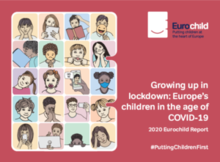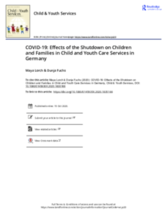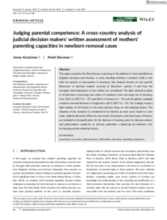Displaying 11 - 20 of 79
This study examined the mental health of Middle Eastern male unaccompanied refugee adolescents in Germany in relation to the mental health of accompanied refugee peers, first- and second-generation immigrant and native peers.
This Independent Expert Report is concerned with challenges experienced by Eritrean refugees in Europe in the context of family reunification processes, in particular those relating to strict documentary requirements demanded by some EU Member States, in particular Germany.
This article compares the reception and integration of unaccompanied minors (UM) in the two countries with a particular focus on their access to education and employment.
This study investigates the extent and causes of child abandonment and various practices and services in relation to prevention of child abandonment in Denmark and other high-income countries.
This report reflects on the effects of the coronavirus pandemic on children. It compiles information gathered from 25 countries across Europe, and provides recommendations for improving public policies in the short and long-term to support better outcomes for children and families, including children in alternative care or at risk of separation.
In this article, the authors describe the short and long term ramifications of the pandemic for children and youth living in their residential programs in Germany under the auspices of municipal child and youth services.
Focusing on Germany, this article aims to explore some of the effects of the COVID-19 measures on children and families. Furthermore, it examines a number of key challenges for child protection practitioners.
This case study explores the arriving process of an unaccompanied minor refugee in Germany and his perception of the psychosocial support he received.
This paper examines the discretionary reasoning of the judiciary in three jurisdictions, England, Germany and Norway, in cases deciding whether a newborn child is safe with her parents or intervention is necessary.
This paper is divided into two parts: The first details the evidence from the ground, painting the picture of life for children during the pandemic in different European countries with statistics and examples, and giving a set of recommendations on measures that national governments across Europe can take to help protect children from the worst impacts of the crisis relating to the economic impacts on families, loss of services, access to education and targeted measures for children in migration. The second part focuses on recommendations to the EU institutions on how EU policy and funding can support and complement these national-level actions in these challenging times.





